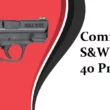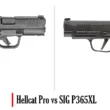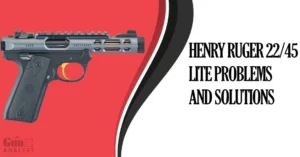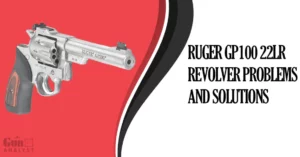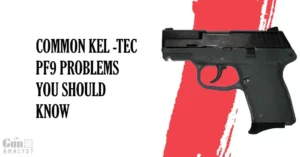The Ruger Precision Rifle is a bolt-action rifle with a unique Pre-Fit barrel technology. AICS, M110, SR-25, DPMS, and magpul style magazines may all be used interchangeably with its patented multi-magazine interface.
The tight trigger, stuck ejector trigger, crooked handguard, misaligned barrel and firing pin issues are the most common Ruger Precision Rifle problems.
Features & Specifications of Ruger Precision Rifle Gun:
| Caliber | 308 Win |
| Capacity | 10 |
| Barrel Length | 20 Inches |
| Weight | 9.8 Ounces |
| Height | 7.30 Inches |
| Length | 39.25 to 42.75 Inch |
| Stock | Folding, Adjustable Length of Pull and Comb Height |
| Width | 3.30 Inches |
| Length of Pull | 12 to 15.50 Inches |
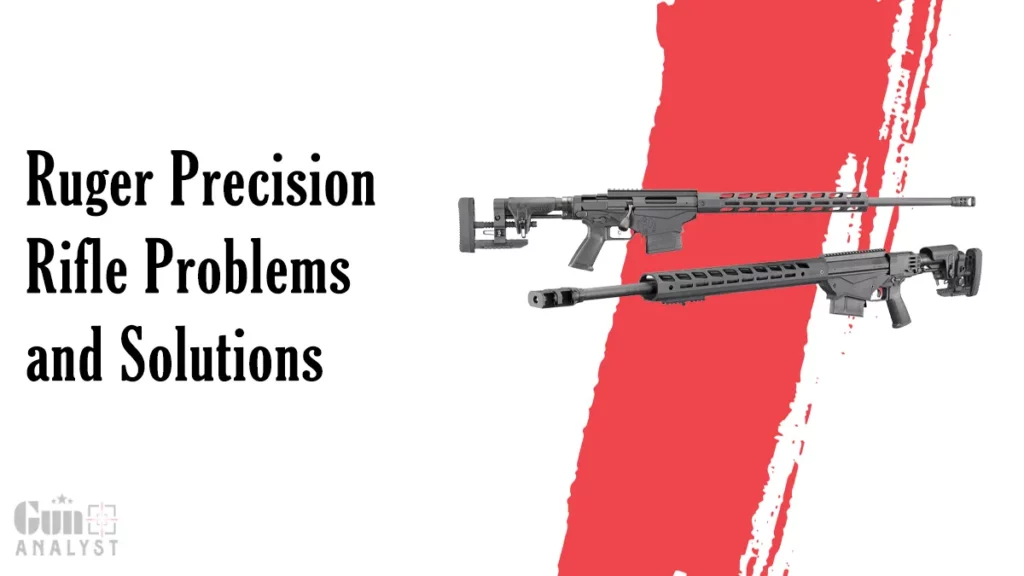
Common Ruger Precision Rifle Problems and Solutions
| Problems with PSA dagger | Solutions |
| Hard to Pull the Trigger | Disassemble the gun and clean thoroughly. |
| Stuck Ejector Plunger | Check the ejector spring and replace it if is damaged. |
| Crooked Handguard | Tighten the barrel nut. |
| Misaligned Barrel | Inspect the stock and repair it. |
| Firing Pin Issues | Regularly clean the components. |
1. Hard to Pull the Trigger:
Some Ruger Precision Rifle buyers have claimed that the trigger is difficult to pull while shooting. This is mostly caused by the rifle’s over travel.
The Ruger Precision Rifle’s trigger may be adjusted for weight, pull length, and over travel. As a result, if the trigger is set excessively heavy or has considerable over travel, it may seem difficult to pull.
Also, the rifle has been subjected to substantial recoil or impact. Falling or mistreatment can make the trigger or internal components damaged or misaligned.
The Fix:
As a first step, disassemble the gun according to the directions in the manual, and then carefully clean the trigger components.
Remove any dirt that may be impairing the trigger’s effectiveness. After cleaning, use a gun lubricant to guarantee smooth functioning.
If you are unable to correctly adjust the trigger pull weight, length, or over travel to your liking, get assistance from a competent gunsmith.
2. Ejector Plunger Frequently get Stuck:
The ejector plunger on your Ruger Precision Rifle may become stuck from time to time for a variety of reasons. Inadequate lubrication can cause greater friction.
This leads the ejector plunger to stick or become sticky sometimes. This difficulty can cause by the ejector spring. The movement of the plunger might be hampered if the ejector spring tension is excessively tight or slack.
The rifle’s curved plunger can also hamper movement, causing it to become stuck and cause problems.
The Fix:
A tiny quantity of high-quality gun grease or oil should be applied to the plunger. Use the right quantity of lube for your rifle and don’t overdo it. Lubrication reduces friction and encourages smooth operation.
Disassemble the bolt carefully to check the ejector spring. Look for evidence of deterioration on the spring, such as distortion or excessive wear.
Verify that the spring is properly positioned within the bolt assembly and exerting the appropriate stress on the plunger. Adjust the tension by gently bending the spring if necessary or you can replace it if it seems broken.
3. Crooked Handguard:
Customers are quite dissatisfied with the Ruger Precision Rifle’s crooked handguard. This issue is caused by the rifle’s loose barrel nut.
Since the barrel nut attaches the handguard to the upper receiver of the rifle, it can cause the handguard to twist or become misaligned if it gets loose.
A misaligned gas block can occasionally influence the alignment of the Ruger Precision Rifle’s handguard. When the handguard is twisted or bowed, it might cause it to seem crooked.
The Fix:
Verify for a loose barrel nut, make sure the rifle is empty, then remove the handguard. Tighten the barrel nut using the required instrument, such as an armorers wrench.
Evaluate the alignment of the gas block with respect to the barrel and upper receiver. If they appear to be misaligned, try to correctly align and secure the gas block and gas tube.
Scan the handguard for evident evidence of damage or distortion. If you observe substantial warping or bending, consider replacing the hand guard.
4. Misaligned Barrel Troubles:
The rifle’s assembly procedure entails connecting the barrel, action, and other components. Assembly errors might result in barrel misalignment.
A misaligned barrel, though uncommon, might be caused by a manufacturing flaw. There may have been an issue in correctly aligning and fastening the barrel during the manufacturing process.
Also, the Ruger Precision Rifle’s stock or chassis system is critical for supporting and aligning the barrel.
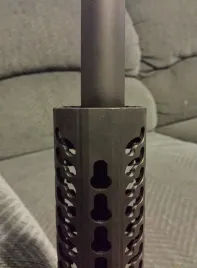
The Fix:
If you suspect a manufacturing flaw, please contact Ruger customer care for help. They can advise on how to deal with the problem, including prospective inspection or replacement choices.
Look for evident evidence of damage, wear, or looseness in the stock or chassis. Addressing stock or chassis faults may entail re-bedding the action or repairing the stock.
5. Firing Pin Issues:
Firing pins can wear and deteriorate with time and with repeated usage. The repetitive pressing of the firing pin against the primer can wear it down or distort it, resulting in difficulties such as light strikes or misfires.
Over time, firing pins and their channels might acquire dirt or excess lubrication. This can impede the firing pin’s smooth travel or prevent it from hitting with appropriate power.
The Fix:
First, inspect the firing pin and replace it if it is damaged. It is preferable to get different kinds of firing pins for your Ruger Precision rifle.
Contamination can be produced by poor cleaning and maintenance, thus frequent cleaning and lubrication can help prevent these problems.
User Feedback on Ruger Precision Rifle
The Ruger Precision Rifle has received a lot of positive feedback on the Ruger forum. Customers, however, are dissatisfied with the barrel’s misalignment. This problem can be effortlessly resolved by acknowledging the manufacturer’s fault.
The Ruger Precision’s advantages and disadvantages may be seen on the Sniper Country page. This might help you decide if you should buy it or not.
You may read about the firing pin issue at this Sniper’s Hide thread along with some other Ruger Precision Rifle problems.
Top 3 Alternative Guns of Ruger Precision Rifle
Here are some best alternatives for the PSA dagger:
- Savage 110 Elite Precision
– Flash nitride target receiver with stainless steel and titanium nitrite bolt body.
– Palma contour barrel with modifications. - Sig Sauer Cross Bolt-Action Centerfire Rifle
-Folding Precision-Style Stock.
– With a weight of less than 6.5 pounds, this rifle is the lightest and most portable in its class.
– Available in.308 / 277 SIG FURY with a 16″ (collapsible to 26″) barrel. - Bergara B14 HMR
– Has a two-lug mechanism, a sliding plate extractor, and a coned bolt nose.
– Breech to assure smooth cartridge feeding and extraction.
– Provides unrivalled quality and performance in its pricing range.
Related Posts: Ruger EC9s vs Taurus G3C – Which Concealed Carry to Choose?
Ruger Precision Rifle Problems – (FAQs)
What is the action type of the Ruger Precision rifle?
Bolt action.
What is the maximum and effective firing range of Ruger Precision rifle?
Maximum firing range is around 2000 yards and effective firing range is around 1600 yards.
What is the Feeding system of the Ruger Precision Rifle?
10-round detachable box magazine.
What number of grooves does the Ruger Precision Rifle have?
Five.
What type of finishing is used on the Ruger Precision Rifle?
Type III Black Hard-Coat Anodized.
How much does the Ruger Precision Rifle cost at retail?
Around $1929.00.



